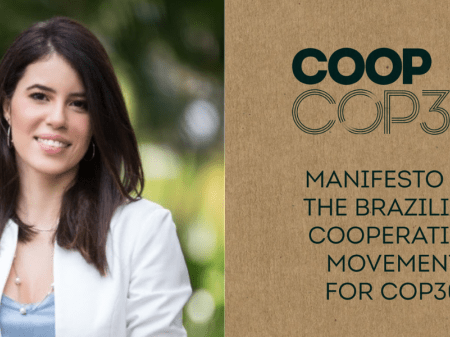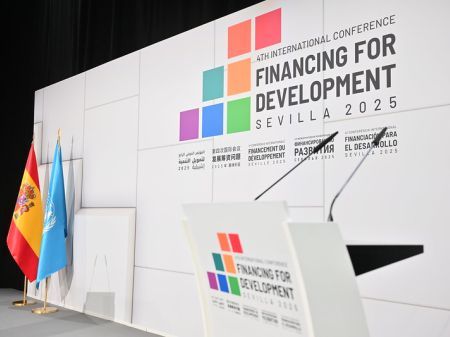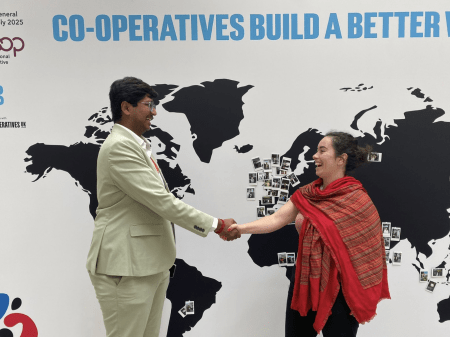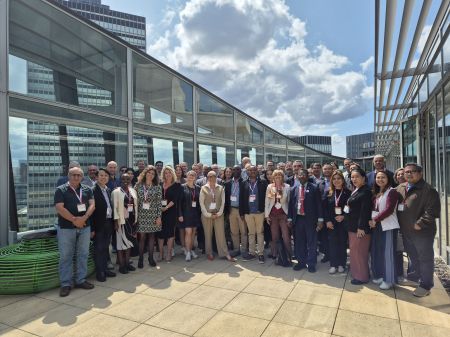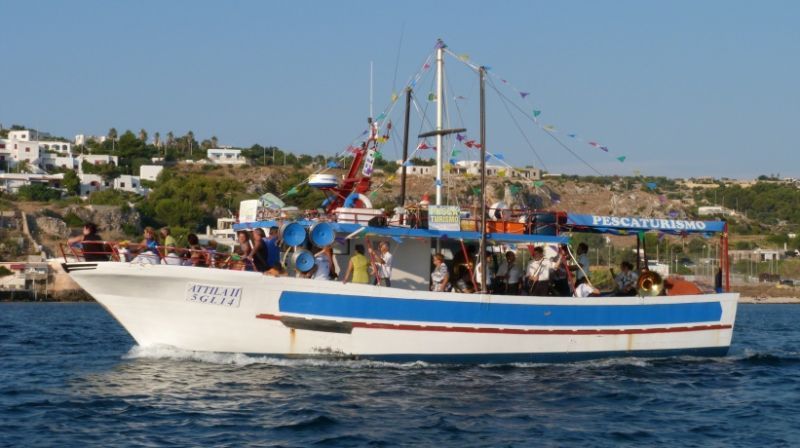
Cooperatives offer a proven model for locally led environmental action. As democratic, member-owned enterprises, they organise collective solutions to manage natural resources, adapt to climate impacts, and restore ecosystems. Their participatory structures ensure stewardship is both equitable and rooted in local knowledge.
One way that Italian cooperatives are reducing pressure on marine resources is by valorising tourism. In the Mediterranean, fishers face a continuing reduction of marine resources and incomes; to this end, over the last 30 years the agri-food sector of Legacoop, the Italian cooperative association, has been promoting income diversification policies connecting the sector with tourism activities.
The Vivere il Mare cooperative in Porto Cesareo (Apulia) is one example of where this diversification has worked; during the summer, one of the organisation’s fishing vessels is converted for tourist activities, both reducing pressure on marine resources and contributing to the preservation of the fishing cultural heritage of coastal communities. The president of the cooperative, one of the few women captains of a fishing vessel, conducts the tours inside the local marine protected area, promoting environmental awareness to visitors.
The agrofood sector of Legacoop promotes, directly and through the NGO Haliéus, the development of fishing tourism solutions all over the Mediterranean through projects as FISHMEDNET (funded by the EU programme ENI CBC MED) that involved fishers and fishing cooperatives from Italy, Lebanon, Tunisia and Palestine.
Globally, work is taking place to look at market access for small-scale fisheries – includig cooperatives, with a workshop hosted at Shanghai Ocean University last November, organised by the university with FAO GLOBEFISH project and UN Trade and Development (UNCTAD).
According to FAO data, fishing and aquaculture represent 49% of the global exports of aquatic products and other animal products (almost 50% of the value of all animal protein exports), and aquaculture and fishing is a growing sector driven by demand. Small-scale fisheries (SSF) account for 90% of total fisheries employment worldwide; they produce 37 million tons of aquatic foods each year, roughly 40% of the global catch, and 492 million people were at least partially dependent on small-scale fisheries for their livelihoods. Furthermore, 4 out of 10 people engaged in SSF are women.
In this framework, the social and solidarity economy (cooperatives, associations and other models) have a key role to play, with cooperatives in the SSF sector proving a way of maximizing long-term community benefits to deal with the threats of fisheries mismanagement, livelihood insecurity and povert
Evidence shows that communities with successful community-based organisations are better off than those without. Successful cooperatives are possible, feasible and desirable and play an important role in community development. Cooperatives have the potential to empower small-scale fishers against environmental and socio-economic shocks such as catch shortfalls, sickness and death in their families, natural disasters and hunger.
In particular, cooperatives can support small-scale fishers in improving their operation through production, handling and processing, marketing, exporting and price bargaining, supply and services (boat building and repair, fuel etc.); consumption, social and community services; fishery resources management and sustainability, and credits, savings and insurance. There are a number of good practices of existing fishing cooperatives across the world, including lobster fishers in Cozumel (Mexico), the TRY Oyster Women’s Association operating in 15 villages in the Greater Banjul areas of the Gambia and the Isabela Women’s Association Blue Fish in Ecuador.
The International Cooperative Fisheries Organization (IFCO), a sectoral body of the International Cooperative Allice, unites 20 cooperative organizations in 19 countries.
Cooperatives are working to preserve land online, too. In northern Fiji, a group of nine Indigenous landowning clans (mataqali), along with a women’s collective and youth group, formed what is now known as the Drawa Block Forest Communities Cooperative to protect 4,120 hectares of rainforest, including 1,723 hectares eligible for carbon offsets. By forgoing logging rights, the cooperative has focused on sustainable conservation activities such as rainforest honey production and verified carbon credit sales.
And in Finland, the Metsä Group, a forestry cooperative and member of the Pellervö Coop Center, is advancing regenerative forestry and land use to enhance both natural capital and economic value. Beyond timber, their forests deliver vital ecosystem services such as carbon sequestration and clean water.
In November COP30 – the 30th Conference of the Parties to the United Nations Framework Convention on Climate Change (UNFCCC) – will be held in Brazil, where countries will be tasked with submitting a national plan, required under the 2015 Paris agreement, to cut carbon as far as necessary to hold to the 1.5C limit.
On 19 June, Brazil presented its "Baku to Belém Roadmap" for climate finance in Bonn, Germany, aiming to bridge the discussions from COP29 to COP30. The plan, emphasises urgency, concrete political decisions, and a focus on developing nations. In this context, cooperatives from every part of the world have a vital part to play.

